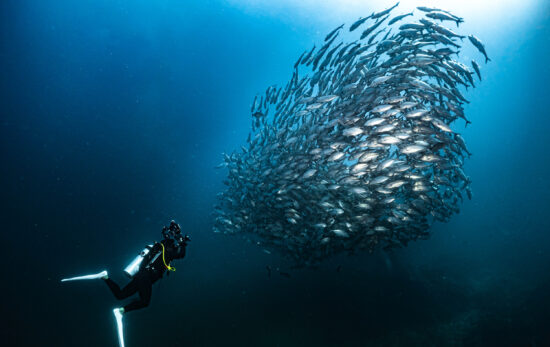Love spotting new marine life underwater? Here are 10 rare marine animals to add to your bucket list…
1. Hairy Frogfish
The hairy frogfish is also known as the striated frogfish, which comes from its scientific name: Antennarius striatus. Despite having a hairy appearance the “hairs” are actually skin appendages or spinules which cover the frogfish’s body, head and fins. These spinules can be copious and long or very short or even almost invisible. They provide the hairy frogfish with incredible camouflage among seagrass, seaweed and detritus found at muck diving sites.
Frogfish are found throughout tropical and subtropical waters. Most species live in relatively shallow waters although some species are deep dwelling. Best places to spot a hairy frogfish are in the Lembeh Strait and Ambon in Indonesia, Anilao in the Philippines, and Mabul in Malaysia.

2. Pygmy Seahorses
This is not only one of the very teeniest critters in the sea, it’s also considered one of the cutest. There are several species of pygmy seahorses including bargibanti, pontohi, denise, and satomi, none of them measuring more than around 1.7cm in length. This makes them one of the trickiest species to find, particularly the bargibanti which lives on seafans and mimics the appearance of the fan exactly. They are also extremely difficult to photograph but when you get a good shot it’s incredibly rewarding!
The best locations for spotting pygmy seahorses are located in Asia, including Indonesia, the Philippines, Malaysia, Thailand and some locations on the east coast of Australia.
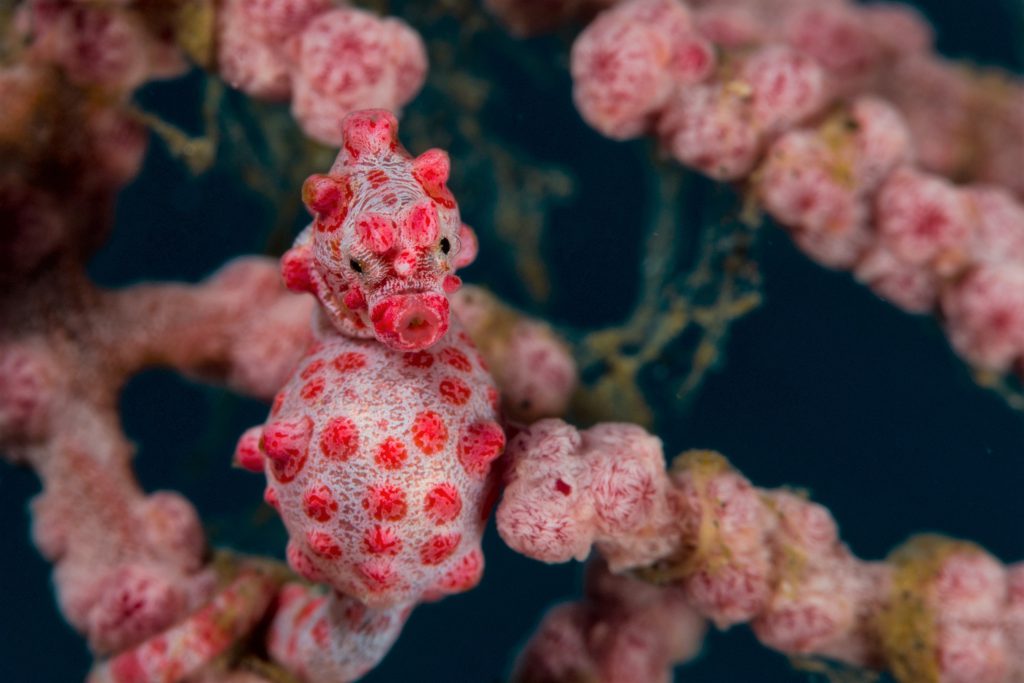
3. Blue Glaucus
Glaucus atlanticus, also known as the blue dragon, sea swallow or blue angel, is a species of brightly coloured nudibranch, and can be found throughout the Atlantic, Pacific and Indian Oceans in temperate and tropical waters. Although it has a wide distribution, it is rarely seen by divers. Unlike most nudibranchs, this species lives throughout the entire water column and not on the reef. An air bubble stored in its stomach keeps the nudibranch afloat.
Like most nudibranchs, this species incorporates toxic chemicals or stinging cells from its prey into its own skin. This ability provides the blue glaucus with a defence mechanism against predation. Blue glaucus rarely reach more than 3 centimetres long and are mostly seen when they wash up on beaches and in tide pools.
4. Leafy Seadragon
The fins of this creature look like leaves which makes this critter a master of camouflage. The fins help the leafy seadragon to move through the water giving it the appearance of a drifting piece of seaweed. These animals are found on the southwestern coast of Australia.
Their unique appearance makes them extremely difficult to distinguish from their surroundings, but it’s great fun trying to find them! If you’re up for the challenge and wanting to spot a ‘leafy’ while diving, try searching among beds of seagrass or kelp and underneath piers.
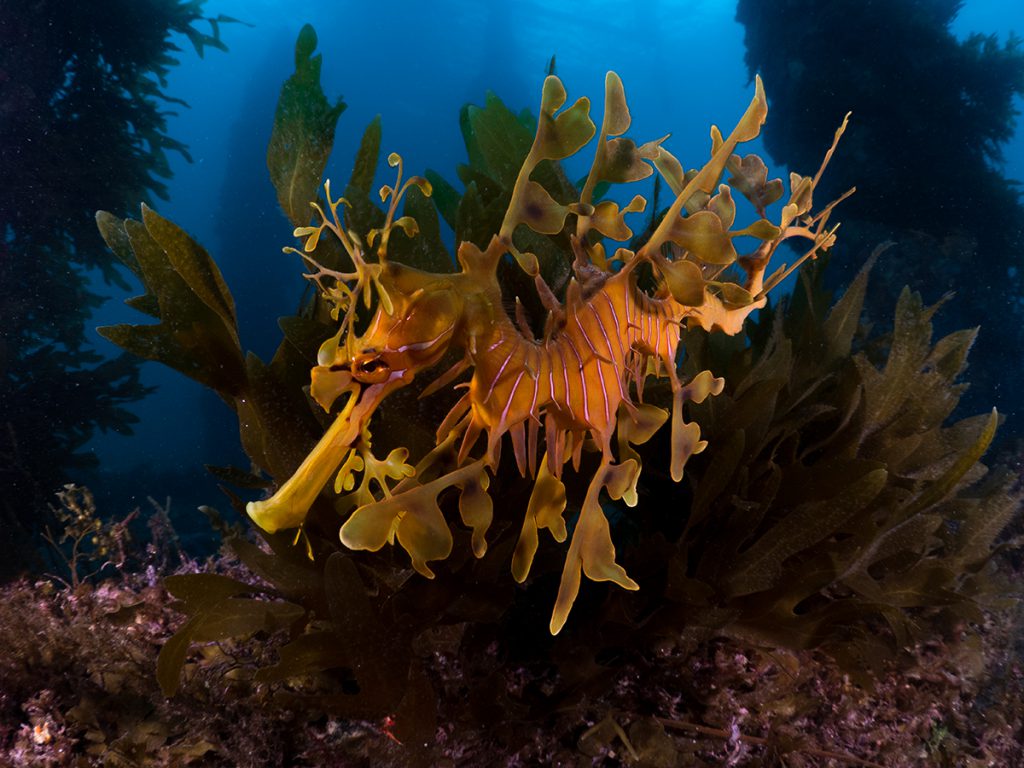
5. Melibe Colemani Nudibranch
Also known as the ‘Ghost Nudibranch’, the Melibe colemani is so strange looking it can be hard to distinguish as a nudibranch – and it’s an extremely rare find. The body resembles a collection of pieces of string (almost net-like) and the rest of the body is completely translucent so that even the internal organs can be seen.
The Melibe was first discovered in 2012 in Mabul, Malaysia and since then it’s been spotted in Komodo and the Lembeh Strait in Indonesia, and Romblon in the Philippines.
6. Seals
Diving with seals is an experience that should be on every divers bucket list. Their extremely playful and inquisitive nature will leave you mesmerised until it’s time to end the dive. Known as the puppy dogs of the sea, seals are fascinating creatures that love to play and copy divers’ somersaults. Seals can be found around the world, here are some great spots to check out:
- Farne Islands, United Kingdom
- False Bay, South Africa
- Hornby Island, Canada
- Ross Sea Antarctica
- Kaikoura, New Zealand
- Baja California, Mexico
- Sydney to Montague Island, Australia
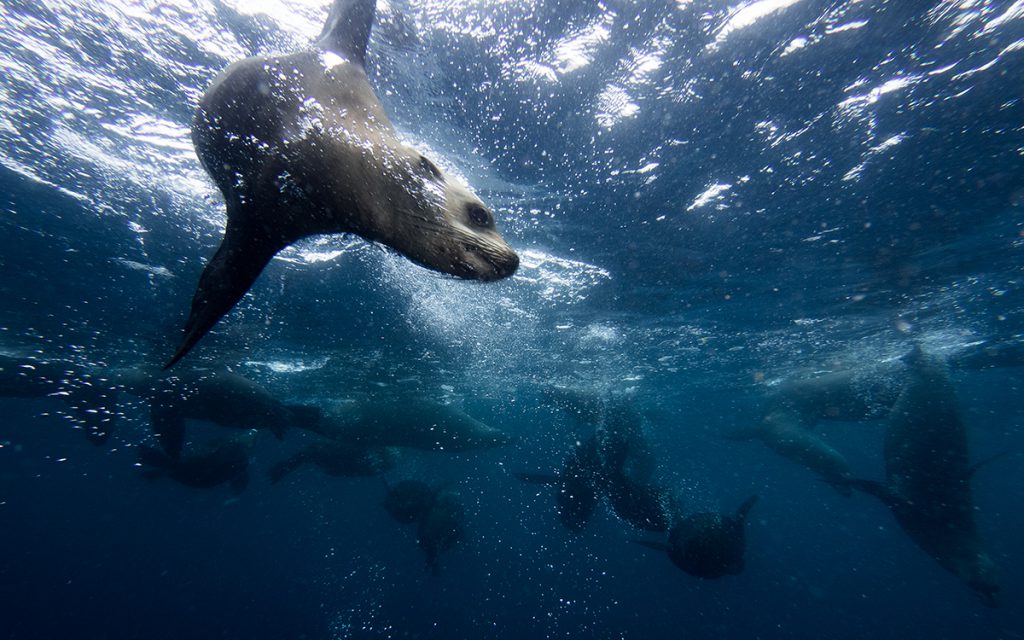
7. Goblinfish
There is one species of scorpionfish which is most highly sought by underwater photographers and that is the bizarre goblinfish (Glyptauchen panduratus). This very strange fish has a blood-red ring around its pupils and a small flattened head on the end of an extended neck. When threatened, the goblinfish fans its feather-like pectoral fins, which makes it look like a chicken. The goblinfish grows to 20cm in length and is rarely seen by divers, as it is nocturnal and likes to hide under seaweed and rocks.
If you want to try and find this species you’ll need to venture into the cooler waters of South Australia. A hotspot to check out is Melbourne’s Port Phillip Bay where they are often spotted under piers.
8. Blue Ring Octopus
This octopus is one of the smallest octopus in the world and also one of the most venomous marine species. If this wasn’t enough to claim its fame, it also has some of the most beautiful markings of any octopus species. When the blue ring is relaxed, the rings can be barely visible but when threatened it will ‘flash’ it’s bright blue and black rings to warn away predators.
There are several species of blue ring octopus found in different regions from the Sea of Japan down to the waters of southern Australia; across from the Philippines to Vanuatu. Great places to dive with them include the Lembeh Strait in Indonesia, Anilao and Puerto Galera in the Philippines, Kimbe Bay in Papua New Guinea, Mabul in Malaysia, and Sydney and Melbourne in Australia.
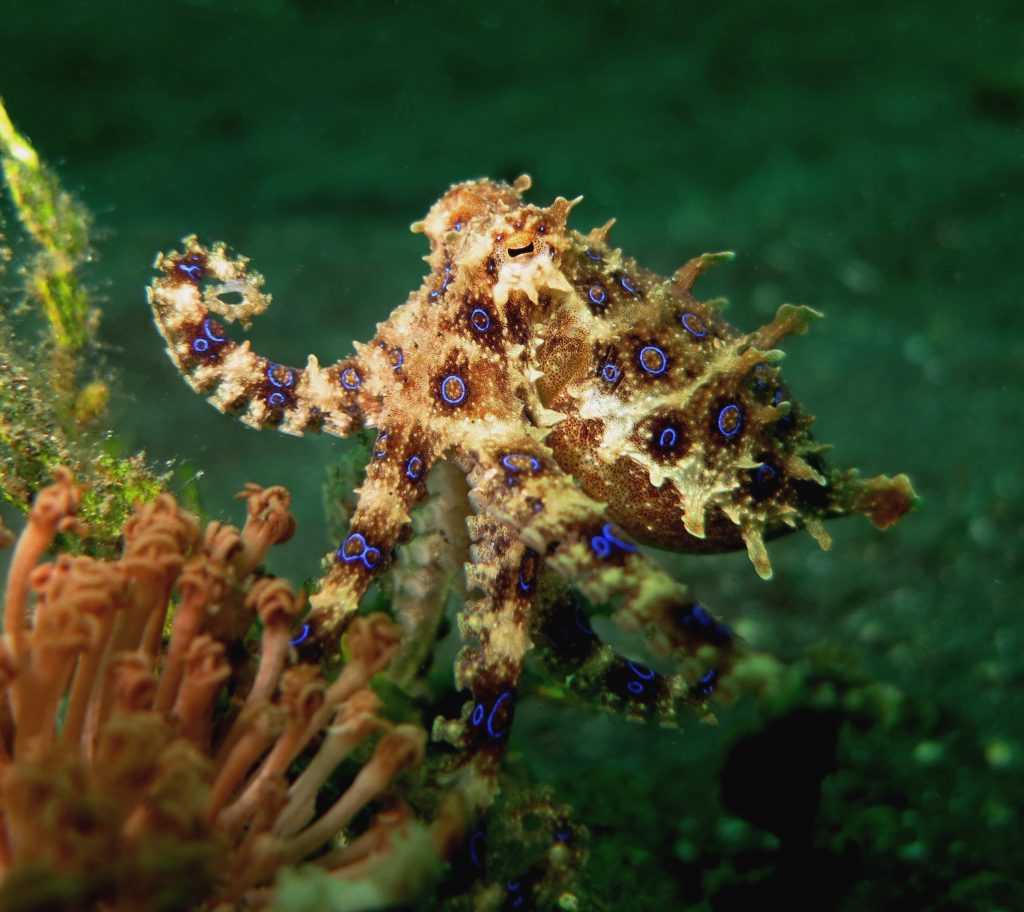
9. Banggai Cardinalfish
Banggai cardinal fish are endemic to the Lembeh Strait in Indonesia which makes them a very rare find! These exquisitely decorated fish have a beautiful pattern of spots and stripes on their bodies. They are mostly found living in small schools around anemones, from which they gain the protection of the anemones stinging tentacles. It’s not clear why this species is found in such a specific area, but if you want to see them, you’ll need to head to the Lembeh Strait in North Sulawesi, Indonesia.
10. Flamboyant Cuttlefish
The flamboyant cuttlefish (Metasepia pfefferi) measures just 6-8cm and has a mostly dark brown coloured body. Unlike other cuttlefish, it can only swim short distances so instead it walks along the sea floor using its arms. Their skin contains chromatophores, which are specialized pigment cells that can change the colour of the skin. These chromatophores create a vibrant display of flashing colours from purple and pink through to yellow and orange. Flamboyant cuttlefish flash their colours for several reasons; they may be trying to attract prey, putting on a mating display, or threatening predators. It also makes them incredible underwater photography subjects – if you can spot them!
Pfeffer’s flamboyant cuttlefish are primarily found in the Indian and Pacific Oceans, from southern New Guinea to the north and west coasts of Australia.
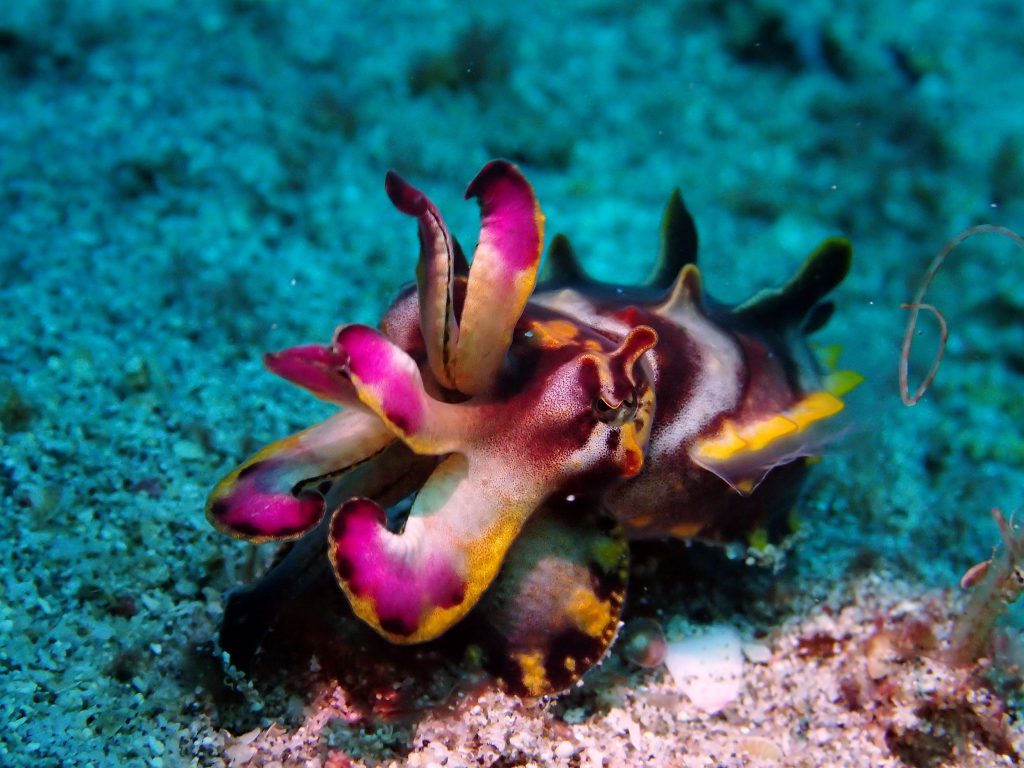
Are you ready to dive in and start finding some of these rare marine animals? Learn more about the PADI Fish Identification course and locate a PADI dive shop near you to get started!


